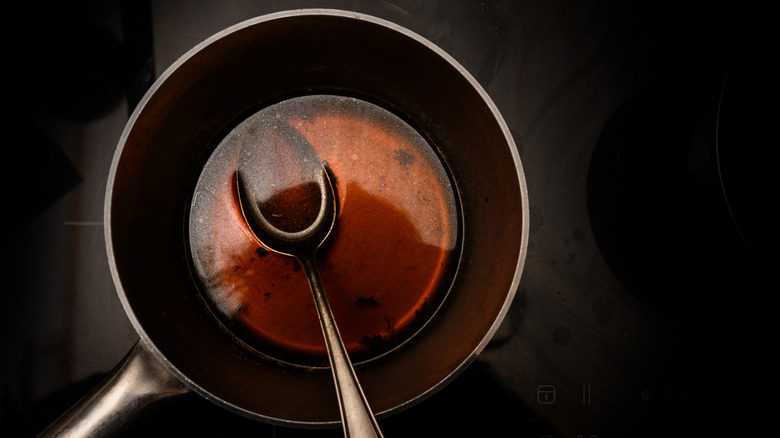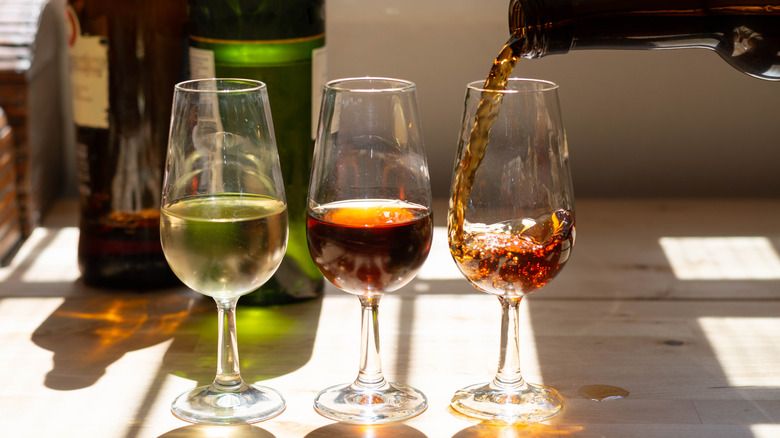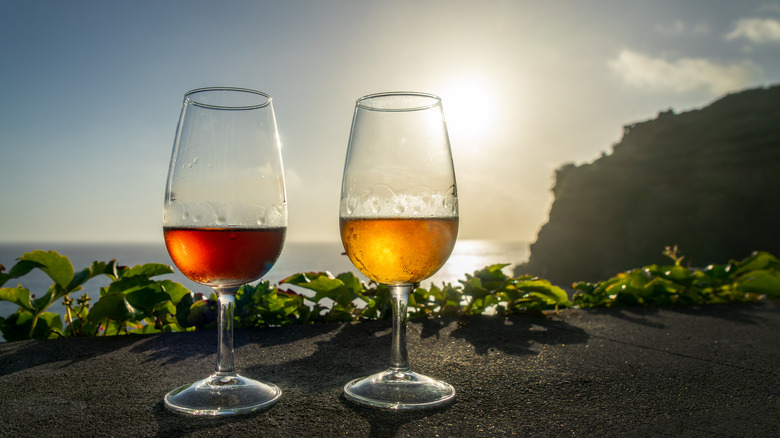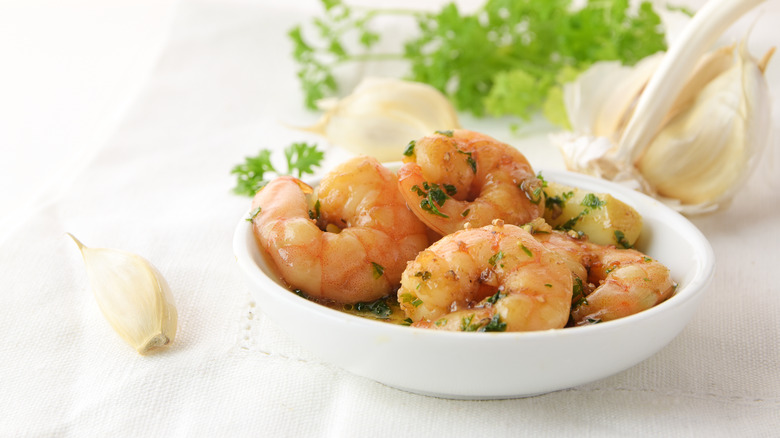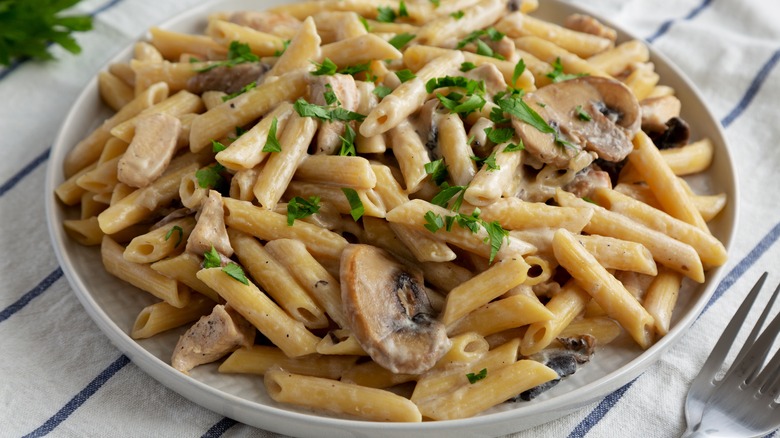Fortified Wine Is Your Secret To Better Sauces And Soups
As the name indicates, fortified wines are wines that have been strengthened by adding some kind of spirit. Originally the goal was to make the wine last for long journeys by halting the fermentation process. It also increased the wines' alcohol levels. Port, Madeira, sherry, and Marsala are popular examples of fortified wines and each has a distinct flavor profile.
Fortified wines vary greatly in taste because of how each of them is produced — the type of wine used, the spirit added, and the amount of sugar used to shape how the final product turns out. The length and style of the aging process also influence the flavor of fortified wine. Each of these kinds of fortified wines can be used to boost the flavor and intensity of your sauces and soups, as well as add complexity. The first step in using fortified wines in cooking is picking the right one for your dish.
Port wine works with savory and sweet dishes
Just like how you cook with wine you like to drink, you want to choose a fortified wine that you enjoy for your sauces and soups. Many fortified wines range widely in terms of how dry or sweet they are. So you also want to make sure that you use the fortified wine that is the best fit for your dish.
Port wine hails from Portugal and comes in a variety of styles. Port is known as a sweet red wine, which is made from several different kinds of grapes and fortified with a spirit made from grapes — usually brandy. Port is aged for at least a few years (depending on the style). Ruby port and tawny port are probably the best-known versions and each has a distinct flavor. The ruby has more fruity notes while the tawny has more nuttiness and a caramel quality. Port can work in both savory and sweet sauces, such as a glaze for red meat or a chocolate sauce.
Madeira makes soups better
Madeira wine is another fortified wine from Portugal and is named after the island where it originated. Like port, it is available in different styles, ranging from dry to sweet. Be careful when buying Madeira. You may see some sold as cooking wine, which is of lesser quality. The blended versions of Madeira are also not the best in terms of flavor. Look for a single-varietal Madeira, such as Sercial or Verdelho, which are great for savory sauces and soups.
This fortified wine is even the star of its namesake sauce. Madeira sauce is popular as an accompaniment to roast beef and it features beef stock, butter, and shallots. You can use Madeira to elevate a mushroom soup by using a ¼ cup or so to deglaze the pan after sautéeing the mushrooms. A few tablespoons of Madeira is all you need to add some depth of flavor to a French onion soup. Madeira will impart some rich fruitiness along with citrus and caramel notes to any dish.
Sherry elevates sauces
Sherry, made in southern Spain, starts with white grapes. The process of making sherry varies whether you're making the dry versions or the sweeter ones. For sauces and soups, you may want to look for the Fino varieties as they are drier and have a nutty quality. Manzanilla sherries would be good to try, too. These have more floral notes and a bit of saltiness. It's a great choice to use as a base for a pan sauce after sautéeing chicken. Sherry also works well in a cheesy pasta sauce.
Sherry pairs nicely with seafood, too. For instance, it plays an important role in the cream sauce for the classic dish seafood Newburg. You could also use it in a butter sauce for shrimp as it would help cut through some of its richness. As with Madeira, you may see cooking sherry sold in stores, but this kind isn't the best quality. You want to buy a sherry that you would drink on its own because that flavor will come through in your sauces and soups.
Marsala works great with chicken
Marsala wine comes from Sicily and it dates back to the 1770s. It was created by an Englishman named John Woodhouse who sought to make a drink like port and sherry. It takes its name from the port of Marsala. Like many other fortified wines, it is sold in dry and sweet versions as well as by how long it has been aged. As a general rule, the older the Marsala the better. More mature Marsala wines have a pronounced nuttiness as well as notes of baking spices.
Marsala is a key ingredient in chicken Marsala, which melds the wine with chicken stock, butter, mushrooms, garlic, and shallots to form a delicious sauce. It can be used in a cream sauce as a contrast to the richness, or in a buttery pan sauce. Additionally, use a bit of Marsala wine to deglaze the pan after sautéeing your aromatics when making the base for a vegetable or chicken soup.
